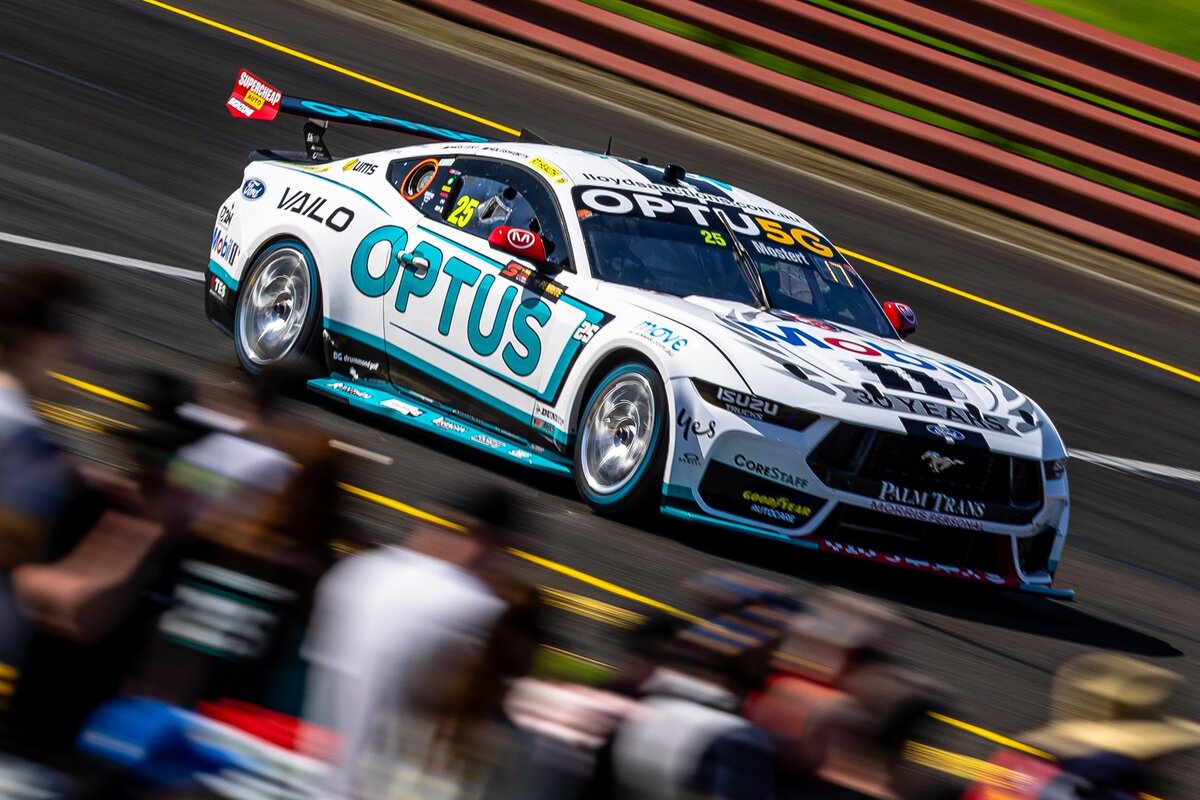

Ford has claimed that recently released CFD data proves that there is indeed a disparity between its Mustang Supercar and its Camaro rival, after its proposed parity changes were rejected.
The Ford camp had been seeking an adjustment to the aerodynamics of the Mustang amid a continually lopsided run of results in the first season of the Gen3 Supercars era.
However, with no parity trigger having been hit of late, the Supercars Board has rejected those changes following intense lobbying from both sides of the championship’s manufacturer divide.
Ford teams have released a statement claiming the situation is “unacceptable”, while the Ford Motor Company itself has issued its own communication on the matter, expressing that it is “deeply disappointed”.
While one change has already been made to the Mustang’s bodywork, in time for July’s Townsville 500, Ford claims the relevant CFD data was only released to homologation teams on August 24.
According to the Blue Oval, “This data clearly demonstrated that aerodynamic parity had not been achieved.”
The statement goes on to declare “We are confident in the strength and capabilities of our vehicles and our teams” and “urge[s] Supercars to create the level playing field [Ford fans] deserve.”
See below for full statement
Ford statement on Supercars parity
At Ford Motor Company, we are deeply committed to supporting our teams and drivers in their pursuit of excellence on the track. We understand that motorsport is not only a reflection of our brand and our products, but also an important platform for showcasing the talent and dedication of our racing partners.
We are therefore deeply disappointed by the ongoing lack of technical parity in the Supercars Championship, which has left Ford and its teams at a significant disadvantage throughout the 2023 season.
This lack of technical parity has had a tangible impact on the performance of our teams and drivers. Despite their skill, experience, and hard work, they have struggled to compete with other cars that have a clear advantage. This has not only been frustrating for our racing partners, but also for our loyal fans and supporters who expect to see Ford on the podium and in contention for championships.
Despite the best efforts of Ford, Homologation Team Dick Johnson Racing (DJR) and engine supplier Herrod Performance Engines to work with all stakeholders to ensure a level playing field, a lack of movement by the series organiser has restricted our ability to compete on an equal footing.
Ford has long been requesting data transparency to assist in understanding the disparity that exists between the two cars. Unfortunately, this has been rejected on multiple occasions.
The latest parity review was initiated when Supercars computational fluid dynamics (CFD) partner D2H Group provided aerodynamic data of both cars to the homologation teams on August 24. This data clearly demonstrated that aerodynamic parity had not been achieved.
Since that time, Ford and DJR have engaged with Supercars in good faith to create an aerodynamic update package that would bring the Ford Mustang and the Chevrolet Camaro Gen3 Supercars closer to aerodynamic parity.
Unfortunately, on the eve of the Bathurst 1000, the Supercars Board has refused to allow the changes which would bring the Ford Mustang and the Chevrolet Camaro closer to technical parity.
We want to be clear that this is not a reflection of the quality of our cars or our racing programs. We are confident in the strength and capabilities of our vehicles and our teams. We know that they have the talent and determination to succeed in any competitive environment, as evidenced by their incredible histories in this sport.
Our top priority is to help our teams to deliver the best possible racing experience for our fans and supporters. We appreciate their loyalty and urge Supercars to create the level playing field they deserve.






















Discussion about this post